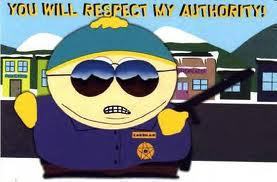Recommended Posts
mnealtx 0
He's probably talking about pads between the shoe and hoof. Egg-bar shoes are pretty common for treating laminitis, in my experience.
I love you, Shannon and Jim.
POPS 9708 , SCR 14706
Horses are expensive, and vets are certainly not cheap. There are some parasites that they can acquire our regular wormers dont touch. They can get them from stagnant water and such, and you know there are many diseases they can catch from mosquitos and such as well. You just can't know if those played a role without a decent workup while the animal is still alive, or as you mentioned necropsy. Toss in the possibility of infections, colic, toxins, choke, and there is no telling what else...you just don't have any way of knowing.
The weight loss started LAST fall, the horse is already lame, so now she becomes a walking uterus?!?! Pregnant mares and baby horses take lots of vet visits and money too! The thing that tweaks me the most is taking an admittibly debilitated
I understand your desire to breed her for a baby, but you knew long before you took her for breeding there was something amiss.
Just remember the heartbreak the next time you make a choice between 'tossing lots of money away' and getting a foal out of her before she goes. The babies don't tend to grow so well when the moms die
edited to add:
FWIW, many 'skeleton horses' come around and do ok when the source is discovered and put on a proper feeding plan. My gut feeling since you described her hanging her head...especially when her grain was increased and even more so if the grain was pelleted, was she suffered from an episode of choke - scarfing the food to quick and it expands in the esophagus and blocks it. Usually you see slime from the nostrils as soon as it happens, but if you saw her a while afterwards it may not have been there. Shot of oxytocin and/or a stomach tube passage (plus farm call fee of course) and you are looking at around $100 bucks.
steve1 5
The weight loss started LAST fall, the horse is already lame, so now she becomes a walking uterus?!?! Pregnant mares and baby horses take lots of vet visits and money too! The thing that tweaks me the most is taking an admittibly debilitated
reply]
................................................................
Well, I'll try not to brow beat you too much either...but I think you are being more than a little too judgmental here. Where I live we don't just keep horses for expensive pets. I you can't ride a horse what is it good for? Maybe we should have put this mare down a long time ago, but many people use lame horses for breeding. She had no trouble standing. She had a limp, and was useless for anything but a short ride.
You do have one valid point though. This mare was still losing weight last spring. We had her teeth floated. We didn't use an off the shelf wormer. The wormer we used was meant to kill the tougher parasites that common wormers don't kill. We hoped the problem was fixed.
Another thing you don't realize is that Vets are few and far between in our country. The house calls they make are extremely expensive. The mares and colts I have raised in the past did not take a lot of extra vet care or money. Most of my horses are grade horses and I don't spend the extra money on them that you might on a race horse....Steve1
I realize a LOT more than you think ![]()
Like I stated before, I understand the reasons for wanting them bred. Many different people do it for a variety of reasons, and yes lame horses are most often broodmares. I would have the same issue with someone breeding a grade horse as a multimillion dollar horse - quite simply no uterus, no foal.
Without knowing what really happened, you don't know if it was an easy fix or not, if she was gonna die anyway or if she had lived another 15 breeding seasons. Whether they are 'expensive pets', 'business investments', or someone's 'livelihood' breeding a nutritionally unsound animal is irresponsible. You call it judgemental, I call it honesty. We can agree to disagree.
Glad to see you can get a dewormer for Clostridium out your way, wonder why they are keeping it under wraps on this side of the continent. Guess I need to move out where the mares are grown from colts to be privy to that.
You asked the question why something happened, people gave you ideas and opinions but the person with the best answers (your vet) was too expensive. I am not saying she needed whirlpool hydrotherapy or any of the other 'super fancy' treatments for anything. I am talking about restoring her nutritional plane before breeding.
You can make a limping/lame horse run a race, but it does not mean you should ![]()



Ah, no, not misread. I guess I thought that your lack of response about laminitis/founder meant that that's what she had and that, plus the problem with the coffin bone led me to think that laminitis/navicular syndrome were potential issues.

Ok, so it's far too complicated to make guestimates and as someone who's evented, point-to-pointed, competed at advanced dressage and worked at the Shadwell stud, I know, not only how difficult it can be to do the right thing at the right time in every medical case, I also know how painful it is to lose a much loved horse, which is principally why I posted.
As I said before, I hope you do find the reason for her demise
Share this post
Link to post
Share on other sites